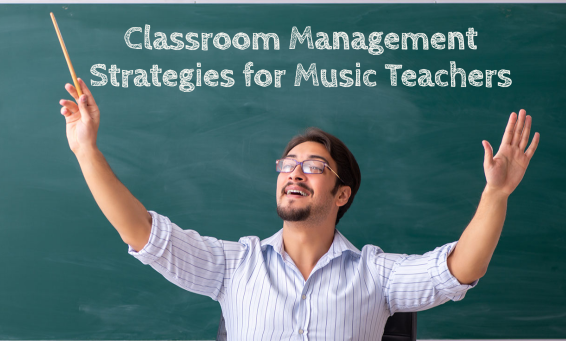
- by Karen Casio
- June 1, 2023
- Uncategorized
- Comments:2
With the start of another school year on the horizon, taking a look at your classroom
management plans may bring a fresh perspective. As you ponder successful elements and those that went “flat”, a few tweaks might be what you need to take your music management plans to the next level.
If you are considering a change to your overall approach to classroom management Dave Schaefer, Choral Director at Garland High School in Garland, Texas, has a suggestion. In his recent National Association for Music Education (NAfME) webinar presentation, Simple Classroom Strategies, he advocates music teachers use the term ‘expectations’ in place of ‘rules’ stating, “we are trying to build a climate in our classrooms; a climate of acceptance, a climate of ‘welcome’ to the students.” To anchor this concept, Shaefer promotes utilizing the word team instead of class. Encouraging his students to work together for a common goal he reminds them, “Unlike sports teams, we don’t have benches. Everybody’s a starter.” 1
Maybe you have decided to alter your expectations and/or accountabilities. Harry Wong, recipient of the National Teachers Hall of Fame’s first Lifetime Achievement Award 2 and co-author of The Classroom Management Book and The First Days of School, says, “The most successful classes are those where the teacher has a clear idea of what is expected from the students and the students know what the teacher expects from them.” 3 He and other educators defend that expectations should be taught and practiced daily beginning the first day of school until they become routine for students; adding that sound expectations will be of little value if they are not backed with strong accountability. Michael Linsin, teacher and author of Classroom Management for Art, Music, and PE Teachers and Dream Class says, “…it’s not which individual decision that makes the greatest difference. It’s making the decision and then supporting it with teaching and accountability that most impacts behavior.” 4 With this in mind, it is reasonable to think that clear expectations paired with immediate and judicious consequences can create a more productive learning environment that can last all
year.
Anthony Molinaro, music educator for more than 16 years, a member and guest lecturer at Carnegie Mellon University and certified teacher of Dalcroze Eurhythmics offers a different approach to classroom management. In his NAfME webinar Music Driven Classroom Management 5 , he capitalizes on children’s natural tendencies to wiggle and move and utilizes that energy to teach basic music concepts through physical movement as a form of artistic expression. He includes transition times from one activity to the next making “every moment in the class ‘feel’ musical” as part of his classroom management plan. 6 Molinaro goes on to say, “When students are engaged with Time, Space, and Energy; the musical sensation it elicits drives the class forward effortlessly. This is the key to Music Driven Classroom Management.” Check out his video:
Music Driven Classrom Management – Designing Procedures
1. Simple Classroom Strategies
3. The Classroom Management Book and the First Days of School

